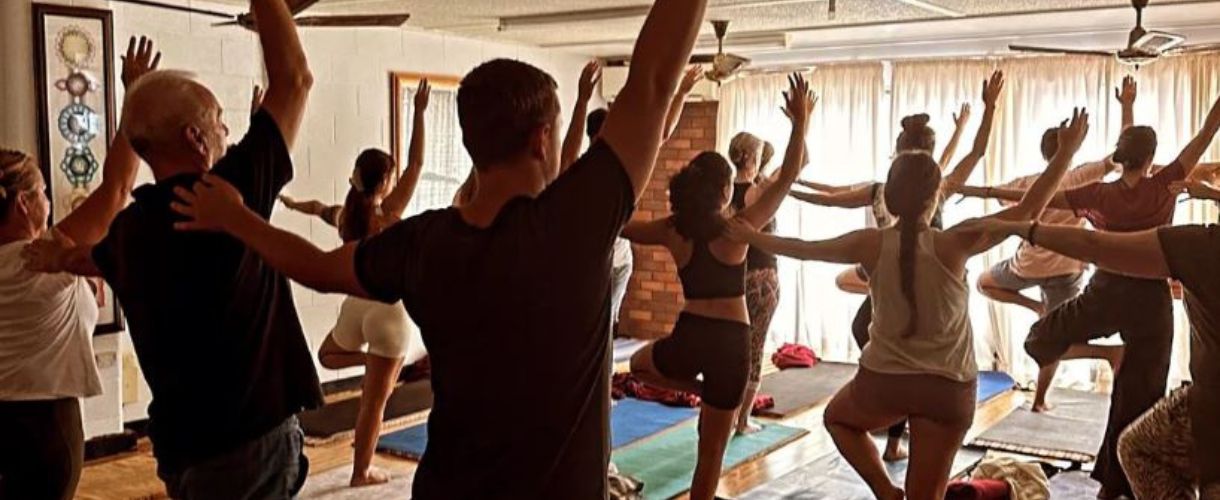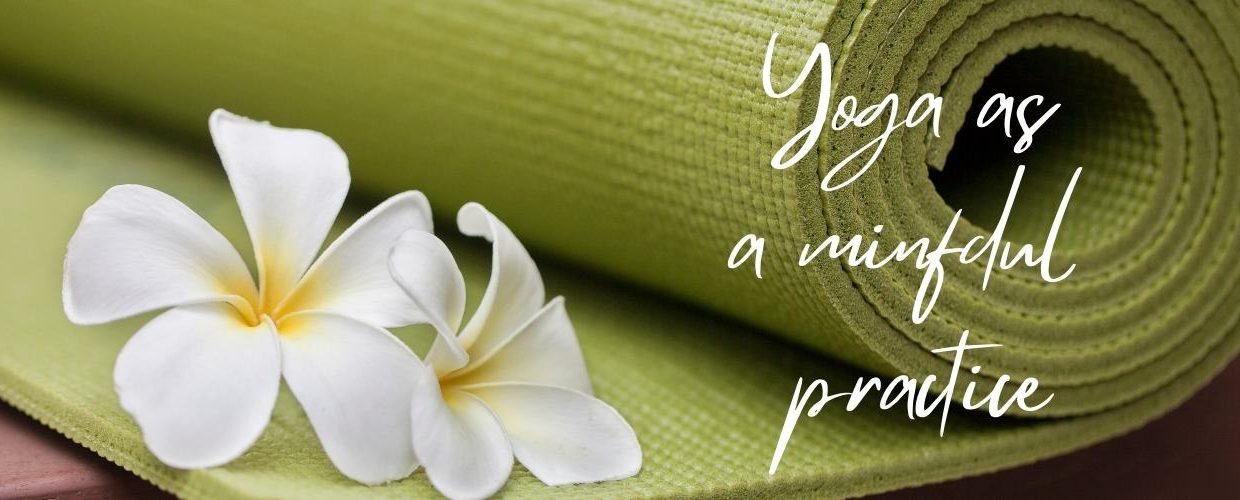
A Retreat with Purpose
August 26, 2024
Nirvana Retreats
September 17, 2024YOGA WELLNESS
Most yoga teacher training programs equip learners to teach fitness yoga postures for stretching and strengthening, not how to address the real life stress and sense of being overwhelmed in the people who show up for classes everywhere in the world today.
Dictating instructions with lots of focus on precise cues and perfect form, demonstrating their expertise at giving them does not provide the best tools available to help our students survive and thrive, despite the massive obstacles that people are facing – individually as well as culturally and globally.
We live in a time of great emotional and mental distress, upheaval, and pain. Many people who attend yoga classes are struggling
– with an anxiety disorder
– a diagnosis of depression
– have experienced trauma
– are living with chronic pain
– the list is endless.
Mental health issues are currently double what they were before COVID. And many yoga teachers themselves feel overwhelmed, frustrated and unqualified to help students struggling with stress, anxiety, depression, and chronic pain. They are fitness trainers instead of teaching a genuine, classical yoga practice, which is mental health focused, using somatic sessions that use the subtle and causal bodies as the central tools to help a practitioner reduce chronic pain and rewire the nervous system.
Additionally, the current Western yoga world’s focus on anatomy above all other aspects of yoga study, with no mention of breath or the soul, excludes the long list of topics one can study and develop skills in, in order to serve one another within the Yoga Space. Perhaps this is because the Western worldview approaches life through the lens of reductionism and scientific materialism, tending to want to break things down, analyse them, and understand the components. This equates to wanting to reduce the human experience to what we can observe and measure.
Furthermore, many believe that good yoga teaching equates to mastering difficult poses. Therefore, to be a master teacher, you will need to practice advanced asanas, and will need to be able to demonstrate them effortlessly. And you should want your students to be able to achieve and accomplish these poses too, and you want them to do that safely, and the building blocks of all of these goals is a masterful grasp of anatomy and biomechanics.
Since the body is what we can see, it follows that most of a yoga teacher’s training time, energy, and resources are spent learning anatomy and physiology, which can be a fascinating course of study. And, as standards for teaching yoga are pretty low, every yoga teacher needs a basic grasp of this essential knowledge base. While anatomy and biomechanics are important topics for yoga teachers to understand, and to feel competent and confident in what and how they are teaching, the primary knowledge base for teaching yoga is not anatomy and biochemistry, and every yoga teacher does not need a PhD in anatomy. It is important to remember that yoga meets many needs, not just stretching flexors. Finding that sacred space in the body doesn’t come by knowing its name. It comes by feeling it, exploring it and even letting go of it and finding it again!
People want natural and sustainable solutions. If even a tiny bit of what the yogis taught can help – then perhaps it’s time to get that information out into the world in order to support the many people who are seeking out yoga to cope with the stressors of being alive in the twenty-first century.
The feedback from yoga students, about how yoga has changed their lives ranges from… how it helped them overcome depression, an eating disorder, how it has helped them find a deeper sense of meaning and purpose in their lives, to how these classes have helped them experience balance and peace. If you are fascinated by the human experience – mind, body, spirit – yoga and its teachings will provide you with a framework through which to explore it.
A class that is all anatomy based, with no philosophy, or spirituality is not yoga. Yoga means unity. Exclusiveness is death. Inclusiveness is life. There’s enough reductionism out there. Yoga is rich and complex and nuanced. There are so many aspects of yoga that are fascinating and worthwhile delving deeper into. Students absolutely love the feeling of letting go and decompressing. Health and wellness is what people want from their yoga class, not an anatomy lesson. And, if you are a yoga teacher with a basic grasp of anatomy and biomechanics, it makes sense to broaden your perspective and your knowledge base and explore other landscapes from the wide world of yoga.
What if anatomy isn’t the most interesting part of studying and teaching yoga? What if difficult poses and/or perfect biomechanics are not your goal? What if you prefer teaching people how to slow down, self-regulate, develop greater interoceptive awareness, feel more comfortable in their own skin, learn to love themselves, learn to connect with themselves, understand their minds, and learn to develop a more intimate relationship with spirit?
Many yoga teachers may find that they really love studying yoga cosmology, epistemology, ethics, or ontology, Sanskrit or Ayurveda. Some may be interested in yogic psychology and Vedic models of the mind, Western psychology, the autonomic nervous system, neuroscience, mudras, meditation, pranayama, subtle anatomy, the history of yoga, and more. All of these are relevant, pertinent, and practical for the teaching of yoga. And every one of these topics is just as vast and useful as the study of anatomy. And just to be clear, I don’t think all yoga teachers need to become experts in any of these topics. However, these are some of the reasons people love yoga so much: it’s never boring, there’s always so much more to learn – so why reduce it to anatomy and biomechanics?
The goal of getting to know yourself better both in the interoceptive (your ability to feel into your body and respond to its signals) and proprioceptive (your ability to understand where your body is in space and its relation to other objects) way comes with slowing down, exploring your (and your student’s) inner world, and melting into the experiential aspect of yoga. The gentle, subtle approach leaves room for adaptations, modifications, and individual needs. Keeping students safe does not become a huge issue when you are not teaching anything that’s terribly risky to begin with, and you are applying all the safety features in your delivery.
To keep people safe, your care of the people in your classes needs to be comprehensive, and appropriate. In today’s world, more students are much more interested in how to manage anxiety and depression, and to find practices that help them find peace when they’re alone and frightened at 3 am. A good teacher looks to the student first and works out how best to serve them.
The focus needs to be on a more functional, person-centered, individual approach, especially driven by the recent wave of research around how somatically focused, functionally oriented movement can help to reduce chronic pain, improve self-regulation and nervous system functioning, and increase self-understanding and self-compassion. The shift is from dictating poses to encouraging the development and enhancement of self awareness comes about by teaching that has evolved from being all about alignment to being more forgiving, more approachable, and creating stress-relieving interoceptive awareness — directing you more into how you “feel” in the pose, rather than how you “look” in the pose. Liberation comes from internalising the practice and owning it. Look inward, feel and listen to your body, to what it needs and how it responds at any given time. By cueing for interception, you are introducing yourself to an entirely new system of feedback. Feeling, exploring, sensing, noticing, pausing, observing and being curious about your body, allows you to respect and appreciate the wellspring of wisdom in it, to slow down, and enjoy the sensations of being alive. It’s joyful, often mind-blowing and incredibly freeing.
Slow, mindful yoga helps you teach somatically-oriented yoga, and include gems around cueing, sequencing principles… and a deep understanding of the importance of the subtle body, which is a big, key-piece to being ahead of the curve. There’s also a lot of misinformation out there about it. Mastering this approach is not as simple as breathing deeply or slowing down the flow (despite what you may be seeing out there from Instagram influencers). There are some very specific cueing, sequencing principles, visualisation, and breathing practices that are essential to know for students to get value from classes so that they can keep coming back for ongoing and deeper healing experiences. This can feel like a whole new way of approaching practice and teaching – particularly if you’ve been practicing with strict alignment, posture, or sequencing rules.
The body is profoundly wise! It not only senses and feels, it also generates and repairs tissues, fights off invaders, detects danger, harnesses oxygen, digests food, and produces babies. The yoga tradition offers unique insight into why the body is so wise, and where that wisdom comes from, and leverages the wisdom of the subtle body to support health. You are a fractal of the universe, and consciousness is not only a function of your mind, it is inherently embedded in your body. Understanding the subtle body, the energy pathways, known as nadis, and discs of energy and information, the chakras are the nexus between the body and the mind. Tantric yoga understands the universe is cyclical. It manifests in order to merge back into the one – the ocean of consciousness. The process of that merger is facilitated by the self-evolutionary practices of yoga, and the road for that evolutionary journey is encoded in the subtle body. Shanti Yoga leverages the wisdom of the subtle body for greater health and wellbeing. Shanti yoga uses yoga practices to access and refine the brain maps of the subtle body. These maps can help you develop greater interoceptive awareness with the objective of increasing self-understanding, reducing discomfort, and improving mental health.
Yoga is largely experiential. It involves learning to tune out your categorising, analytical mind and tune into a deeper wisdom and knowing. It involves learning to feel into your body, and beyond your body into your subtle body, and the deeper levels of consciousness. It also, importantly, involves tuning into and experiencing the wisdom of your deeper Self. Yoga is a living art. It is a means of moving, breathing, thinking, expanding and contracting, evolving and interacting within the complex, ever-changing landscape of the world within and around you. If you keep the chakras in the wings of your awareness, you learn how the endocrine system works… how yoga breathing evokes calmness as the nervous system resets itself and so on. These skills, from gross to subtle, to the wisdom of the higher self have intrinsic value that is at least as important, if not more so, than understanding what each muscle, bone, and joint is doing in a pose.
You learn to be focused and disciplined while letting go, surrendering the ego while steadying the mind, and all the while tuned into the complexity of whatever is arising. There is nothing in the human body remotely mechanical. There are no hinges, no building blocks. We developed ourselves, each and every one of us, from cells which rotate and differentiate and finally became a recognisable human being. Some cells remain fluid, others respond to the stress of gravity and weight bearing and became bones. Some cells become muscle fibres to move the bones around, etc. Nothing linear in that. Nothing mechanical. We are not bolted together.
This is what yoga is all about. Not by knowing anatomy or the Veda’s, but by observing the body in front of you, and responding appropriately. This approach to practice requires a willingness to invite and be without knowing. The more advanced your practice becomes, the more inward it becomes. For many practitioners, a keen truth and meaning spontaneously arise as insight into the vast, interconnected nature of all things.
Sitting in deep meditation,
in their Himalayan caves,
snow falling softly outside,
exploring their inner universe for hours, days, years.
First they listened for the sound of their breath,
then their heartbeat
and the flow of blood through the vessels.
Sitting longer, they began to sense a swishing sound of the cerebrospinal fluid through the brain and spinal cord.
and heard the whirring sounds of their nerves.
More deeply, they began to hear far away sounds,
deeper sounds, beyond the physical body,
the pulsing spanda or vibration of the subtle body centers – the chakras.
The sounds of the heart chakra,
then the navel center,
of the throat chakra as well –
and beyond those bigger sounds,
they even heard the sounds of each petal of each chakra
– the subtle body singing the whole of the varṇamālā,
the garland of letters that comprise the Sanskrit alphabet.
From the depths of these experiences
the yoga tradition emerged,
and was passed down over centuries and millennia
taught through the various lineages.
Let go and flow.
I offer you all blessings towards an immense knowledge of the whole human and your approach to yoga, not making it a physical fitness race, but rather a beautiful strategy to be well, nurture yourself and stay balanced and energetically healthy.






